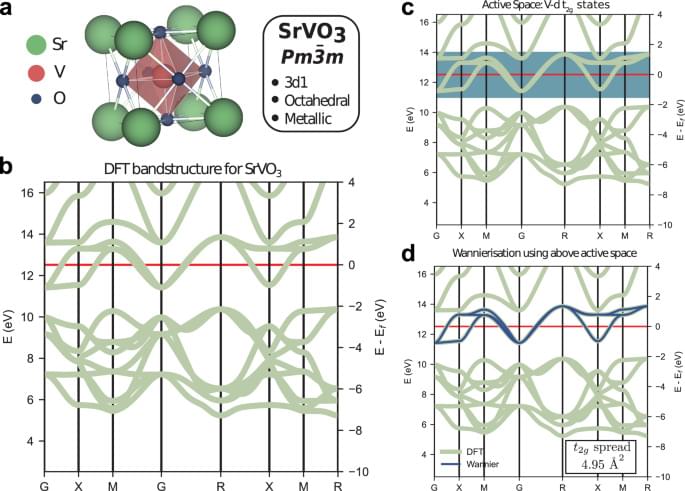A 54-atom golden knot is tighter than the knots in DNA and comes close to the theoretical limit of knot size.



Of all the organisms that photosynthesize, land plants have the most complex bodies. How did this morphology emerge? A team of scientists led by the University of Göttingen has taken a deep dive into the evolutionary history of morphological complexity in streptophytes, which include land plants and many green algae.
The team’s research allowed them to go back in time to investigate lineages that emerged long before land plants existed. Their results revise the understanding of the relationships of a group of filamentous algal land colonizers much older than land plants. Using modern gene sequencing data, researchers pinpoint the emergence of multicellularity to almost a billion years ago. The results were published in the journal Current Biology.
The study focused on Klebsormidiophyceae, a class of green algae known for its ability to colonize diverse habitats worldwide. The team of researchers conducted extensive sampling, investigating habitats ranging from streams, rivers, and lake shores to bogs, soil, natural rocks, tree bark, acidic post-mining sites, sand dunes, urban walls, and building façades.

Astronomers have discovered a mysterious radio signal at the heart of an ancient, tightly packed ball of stars, and it may be coming from a long-hidden black hole.
The radio signal was picked up by the Australia Telescope Compact Array (ATCA) radio telescope as it created the most sensitive image of a globular cluster — a clump of ancient stars like these — ever taken. The ball of stars in question, named 47 Tucanae, is the second-brightest globular cluster in the sky over Earth and is located around 13,000 light-years from our planet.

The use of NISQ devices for useful quantum simulations of materials and chemistry is still mainly limited by the necessary circuit depth. Here, the authors propose to combine classically-generated effective Hamiltonians, hybrid fermion-to-qubit mapping and circuit optimisations to bring this requirement closer to experimental feasibility.


Psychologists from Edith Cowan University (ECU) have used virtual reality (VR) technology in a new study that aims to better understand criminals and how they respond when questioned. The results are published in the journal Scientific Reports.
“You will often hear police say, to catch a criminal, you have to think like a criminal—well that is effectively what we are trying to do here,” said Dr. Shane Rogers, who led the project alongside ECU Ph.D. candidate Isabella Branson.
The forensic psychology research project involved 101 participants, who role-played committing a burglary in two similar virtual mock–crime scenarios.

Stepping inside Erin Adams’ lab at the University of Chicago is a bit overstimulating.
Adams’ work centers on molecular immunology. As the Joseph Regenstein Professor of Biochemistry and Molecular Biology and vice provost for research, she researches the molecular signals that the immune system uses to distinguish between healthy and unhealthy tissue.
And her lab is expansive. It includes a tissue culture lab space—where she and her team of postdoctoral fellows work with cells to try to recapitulate things. Then there’s the crystal room where one can find hundreds of labeled wells filled with proteins that are being watched to see if three-dimensional crystals materialize.
The mysterious Lycurgus Cup is convincing evidence that ancient Romans used nanotechnology, or at least knew how to get the desired effects, long before the availability of modern technology.
The cup is made of a special type of glass known as dichroic, meaning “two-colored” in Greek, which changes hue when held up to the light. It is opaque green but turns to glowing translucent red when light shines through it.
The Lycurgus Cup owes its unusual properties to the use of tiny quantities of colloidal gold and silver. The rim of the cup is mounted with a silver-gilt band of leaf ornament. Its type is known as a “cage cup,” as it consists of a cage around the glass.

Chemical analysis of rocks found in South Africa shows that ancient microorganisms sustained themselves in a variety of ways, adding to evidence for an early origin of life on Earth.
